This post contains affiliate links. For more information, please see my Disclosure Policy.*
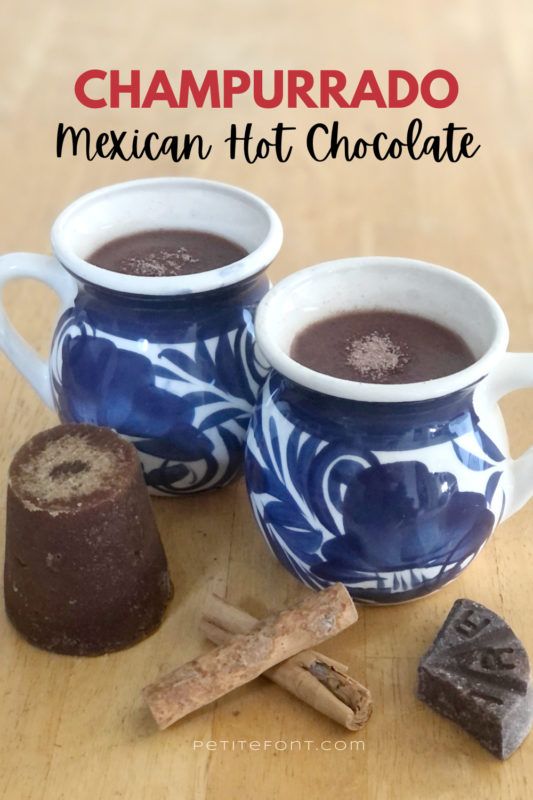
What is Mexican hot chocolate (champurrado) and how is it different from regular hot chocolate? How do you even pronounce champurrado?
Fret not, dear reader. You’re about to go on a magical ride. A chocolate-flavored magic ride!
This is champurrado:
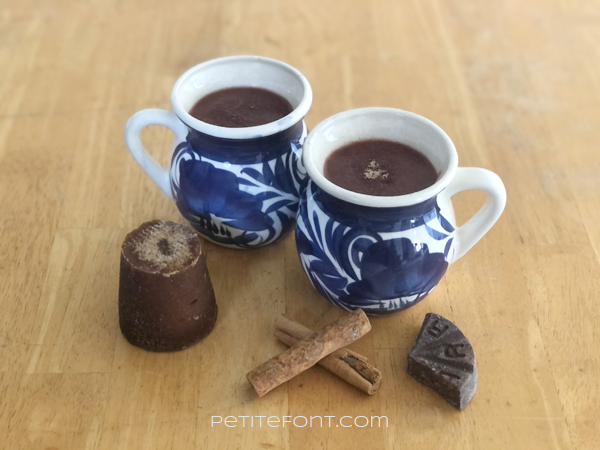
And you can thank the ancient Aztecs and Mayans for it!
The use of chocolate can be traced back to the great Olmec civilization in 1500 BC, a full 3,000 years before the Spaniards invaded Mesoamerica. Chocolate is derived from the fruit of cacao trees, which are native to Mesoamerica where the Olmec civilization thrived until about 400 BC.
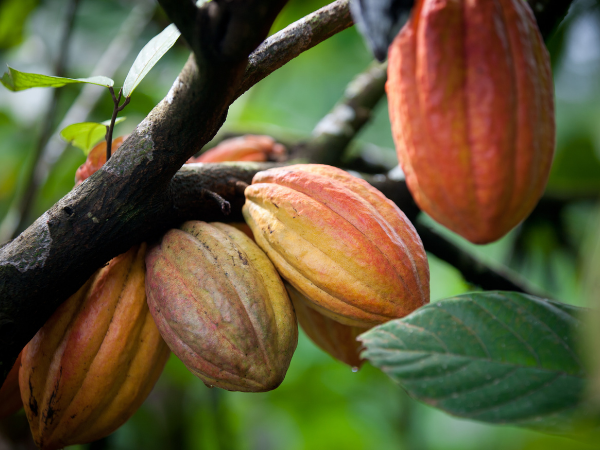
The use of chocolate was passed down to both the Mayans and Aztecs who enjoyed it made into a beverage; the Aztecs even used cacao beans for currency.
So how did this become the concoction known as champurrado?
What is Champurrado?
Champurrado is a type of atole. A-what? Ah-toll-eh. We’ll get to that.
As for pronouncing champurrado, get ready to roll some Rs! In Spanish the double R calls for some extra rolling, kind of like imitating the engine in a car.
It’s pronounced cham-poo-rrah-doh.
This Spanish dictionary has a decent audio example. Almost all the other ones I found were like nails on the chalkboard.
If you can’t roll your Rs, please just call it Mexican hot chocolate. It’s fine.
What is Atole?
Ah si, atole.
Atole = ah-toll-eh. Like an atoll, but with an extra “eh” at the end. Easy, right?
So what is it and how is champurrado related?
An atole is a beverage thickened with a corn-based flour like masa harina, cornmeal, cornstarch or even rice flour.
Champurrado is a specific type of atole. It’s basically chocolate atole.
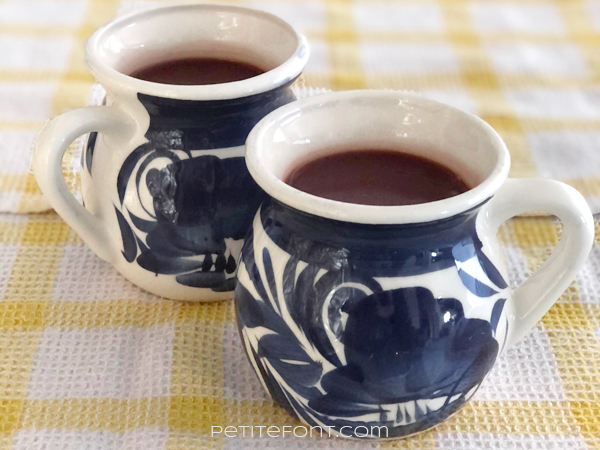
Champurrado is only one type of atole; there are many variations. The word atole comes from the Nahuatl word “atolli” which means watery.
Nahuatl is the language spoken by the ancient Aztecs and Toltecs in what is now southern and central Mexico (the center of the Aztec empire was Tenochtitlan, which is now Mexico City). It is still spoken today by about 1.5 million people!
There are a number of English words that have their roots in Nahuatl. A few of them are:
- avocado: ahuácatl meaning testicle
- coyote: coyōtl
- tomato: tomatl
- shack: xahcalli or xacalli meaning grass or wooden hut
And of course, chocolate which is either cacahuatl or xocolātl.

What is Masa Harina?
Back to making champurrado! One of the defining ingredients, and what sets champurrado apart from typical hot chocolate, is the addition of masa harina.
Masa harina (ma-sa ah-rin-ah) is a dried flour made from corn that has been slaked or nixtamalized. This means it’s been soaked in an alkaline solution, like lime water.
Why is this done?
Well for one, it increases the nutritional value of the corn. Whaaat? Yeah, according to Wikipedia:
It is more easily ground, its nutritional value is increased, flavor and aroma are improved, and mycotoxins are reduced.
From Wikipedia
That’s what Mesoamericans were doing to their maize when the Spaniards showed up. So it’s a process that dates back thousands of years.
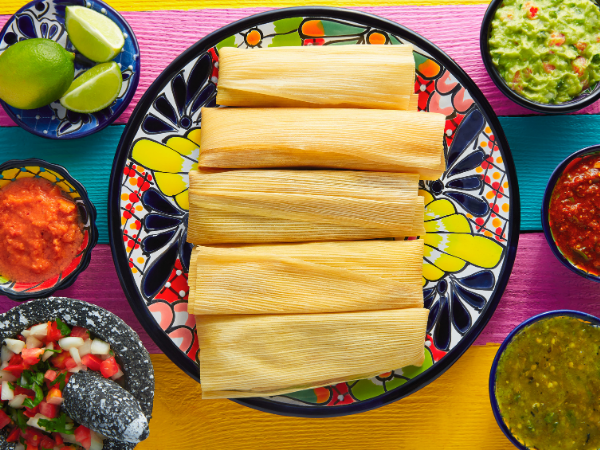
Masa harina is also what’s used to make corn tortillas, tamales, and a whole host of Mexican food. Like any other starch, it’s also used to thicken dishes. Use it in your next gravy—it’s gluten-free!
How is Champurrado Different from other Hot Chocolate?
2 things differentiate champurrado from regular hot chocolate: the thickness and the type of chocolate used.
Regular hot chocolate is runny, like water. But champurrado is a thick beverage thanks to the addition of masa harina.
This can be changed to suit your taste, of course. Some people prefer a thicker beverage than others.
And unlike hot chocolate, which we treat as a dessert here in the USA, champurrado is also enjoyed for breakfast—or any time of the day.
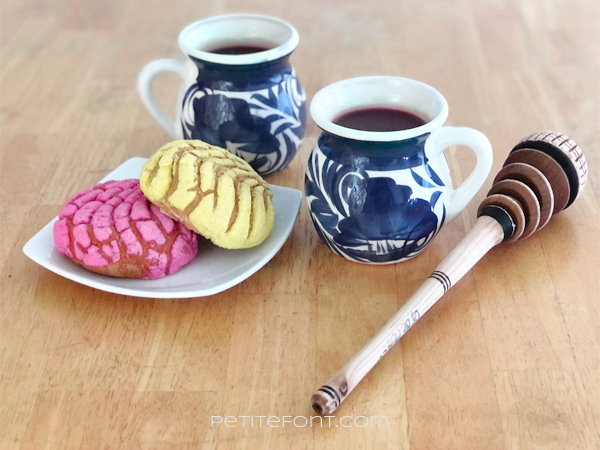
One of my favorite memories of visiting family in Mexico is having champurrado anytime I wanted. It was a treat, since that’s not something I got to enjoy at home much.
The type of chocolate is also important. Mexican chocolate is a bit grainy with a very high sugar content. It’s also made from roasted cacao nibs, which gives it a bitter flavor.
In the US, it’s sold in these hard pressed discs:
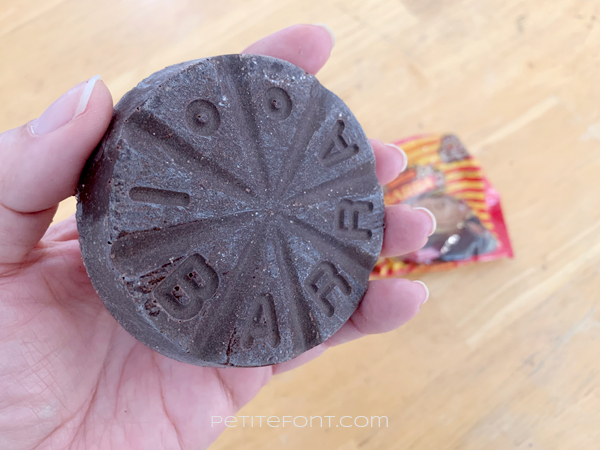
The two most popular brands are Ibarra and Abuelita. The latter is a Nestle product and they’re evil, so I use Ibarra.
Compared to American chocolate, it’s a minimally processed product so the bitterness and graininess are its defining qualities. This isn’t like a candy bar.
Because of the bitterness, Mexican chocolate isn’t meant to be eaten alone. It’s a common ingredient in foods you would be surprised use chocolate, like mole, tamales, and even enchiladas.
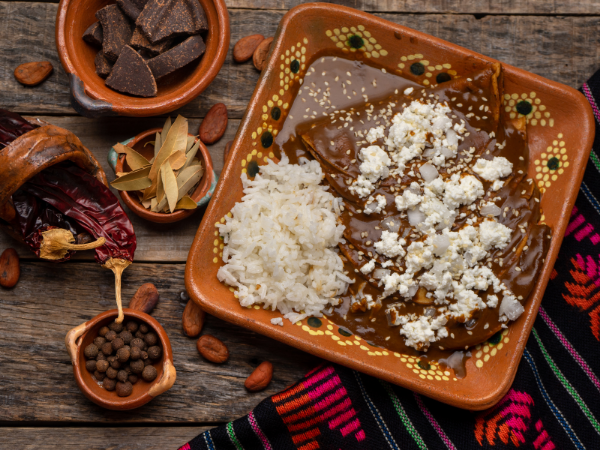
And it’s the chocolate that gives champurrado its flavor and color.
Buy Mexican chocolate.
How to Make Champurrado
What ingredients go into champurrado? You’ll need your Mexican chocolate discs, water, masa harina, cinnamon (and maybe other spices like star anise), maybe some milk, and sugar known as piloncillo.
Piloncillo (pee-lohn-see-yo) is sometimes called Mexican brown sugar. And while brown sugar is a fine substitute if you can’t find the real thing, they are not the same.
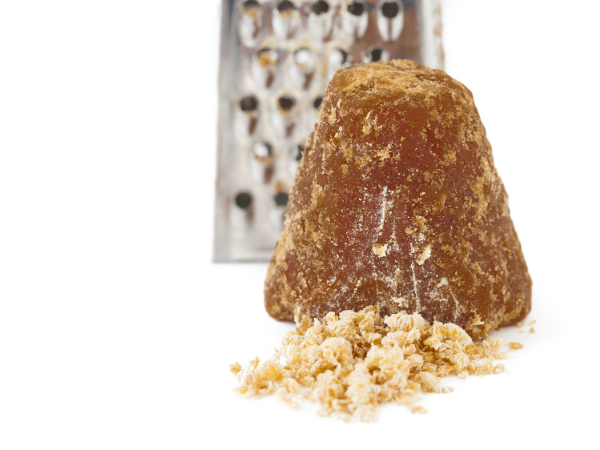
Brown sugar is refined white sugar with molasses added back. Piloncillo, on the other hand, is unrefined cane sugar that is boiled and poured into molds that give its distinct cone shape.
It’s also really hard! The best way to use it is to grate it as opposed to chopping it. Once it’s grated, it definitely resembles brown sugar.
Does this sound like a lot of work? A dirty little secret is that you can buy champurrado in pre-made mixes, you just add milk. In fact, I wouldn’t be surprised if this is actually how the champurrado of my childhood was made.
It’s how I made the ones in these pictures. No shame.
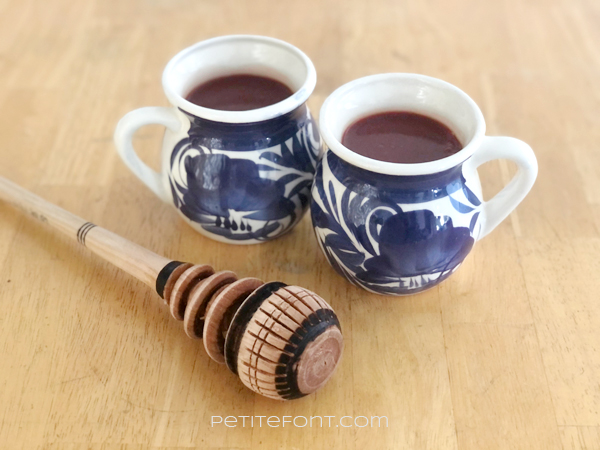
I did try several recipes, but couldn’t get the thickness of the final product right. So instead of giving you a recipe of my own, I’ll just point you to these authentic ones that all sound wonderful.
I’m especially a huge fan of Pati Jinich’s recipe for champurrado. My mistake was adding too much masa to it. The drink thickens as it cools, so mine turned into a thick mud.
Oops.
Here you can watch Pati make it herself. Unlike the other recipes, the masa is strained out of this one:
Note: like other thickened liquids, this will form a skin if left to cool. Don’t worry, it’s still edible! Just mix it up to reincorporate it into your drink.
Here are some tools and ingredients you might find useful if you choose to make champurrado from scratch:
Save this on Pinterest for later:






Wow. I come for sewing but I get so much more. I am loving these blogs that are related to your cultural background. We don’t get all that much Mexican food here in Oz (except the standard Tacos and burritos from the supermarket shelves) and this is so interesting. I need to check out some local supplies. This sounds like the perfect alternative to coffee.
I’m glad you’re enjoying it Rebecca! I love exploring my cultural roots and will have much more of this type of content moving forward. But don’t worry, I’ll still post about patterns occasionally!
So, what are some brands of the prepared mixes for champurrado, and where can I buy them? It sounds good and I’d like to try it, but I’d like to do it the easy way, and since I won’t be able to drop in on you soon, I’d like to whip some up in my own kitchen. Will my German husband who loves enchiladas and American hot chocolate enjoy an authentic Mexican cocoa with them? It would be fun to find out.
Here are 2 brands I’ve had that you can get on Amazon (with aff links):
– Klass https://amzn.to/3b36MAH
– Maizena https://amzn.to/3c5ehGX
Let me know what he thinks!